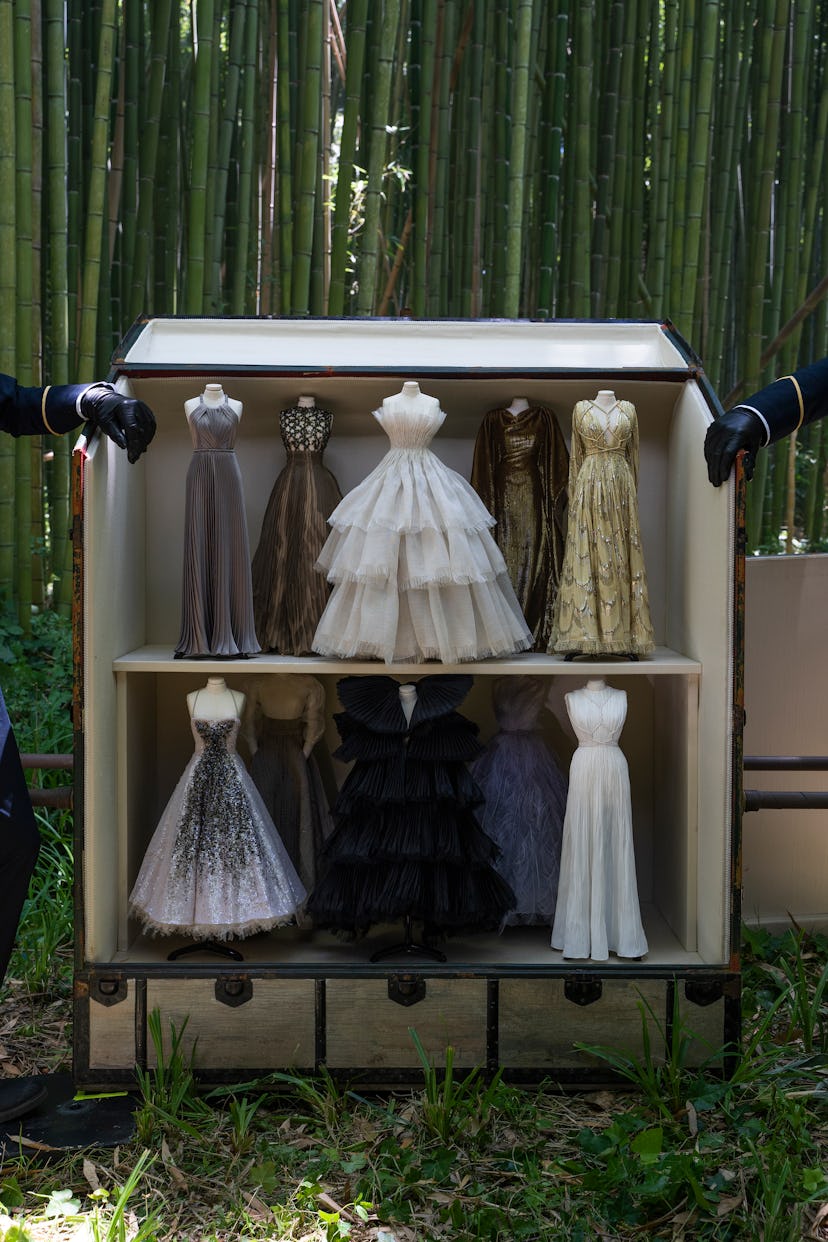Dior Opens Paris Couture Week With a Dreamy, Experimental Short Film
Designer Maria Grazia Chiuri presented miniature haute couture looks in Paris on Monday, inspired by the Théâtre de la Mode.

At the end of World War II in 1945, the once-flourishing fashion industry—a major economic and cultural power prior to 1939—was all but depleted. Couturiers and vendors had fled Nazi-occupied France; those who were left struggled to find thread, textiles, and other necessary supplies. Their customers were gone, no longer in need of fine wares when food and shelter took precedence.
Following the liberation of France, the son of Nina Ricci, Robert Ricci, brought forth an idea to revitalize the fashion sector and stoke interest in clothing once more. He and other couturiers created the Théâtre de la Mode, a traveling exhibit featuring miniature, doll-like mannequins wearing the designers’ latest creations.
The Théâtre de la Mode, pictured here, was integral inspiration for Dior’s fall 2020 haute couture collection.
The dolls were presented on life-like sets designed by Jean Cocteau, among others—some appeared on what looked like a Parisian street, while others stood in front of miniature centaur and mermaid statuettes made of stone. The Théâtre de la Mode journeyed around the world, beginning in Europe and ending in San Francisco for one year.
The Théâtre de la Mode in Paris, 1945.
Fast-forward to today, and the origin story rings familiar, even though the world isn’t at war in the traditional sense of the word. The coronavirus pandemic and protests against racism have transformed the economic and social landscapes around the globe—with fashion being especially hard-hit in the wake of one of the largest financial downturns in recent history.
It is in this moment that Paris Couture Week begins.
Usually, brands put on a series of presentations featuring their most fanciful, emotional, and whimsical looks on massive sets, down runways packed with spectators and editors. That, obviously, is not an option this year, and the official Paris Couture Week as the fashion industry has come to know it was canceled in late March.
But some fashion houses are creating their own presentations, in a new interpretation of the tradition. Enter Dior, which opened the week with an alternative to the traditional runway show, inspired by the Théâtre de la Mode. On Monday afternoon at the brand’s Paris atelier, designer Maria Grazia Chiuri presented the fall 2020 haute couture line at miniature scale. Thirty-seven small dress forms, housed in a trunk in the shape of Dior’s headquarters on Avenue Montaigne, were shown to a handful of editors, clad in face masks. For those who couldn’t travel to the French capital for the showing on Monday, Dior unveiled a short film on its website to showcase the looks and tell a story steeped in fantasy.
Looks from Dior’s fall 2020 haute couture line.
Directed by Italian filmmaker Matteo Garrone, the 10-minute short showed two bellhops traveling through a bamboo forest, rocky cliffs reminiscent of scenes from Lord of the Rings, and river banks, carrying the trunk full of miniatures, shopping the looks to a half-woman-half-snail, a mermaid, and a wood nymph. The Grecian-inspired column dresses, frothy ballgowns, and Bar jackets done in mini sizes became bespoke pieces the characters wore at the close of the film.
Behind the scenes of Dior’s short film for Paris Couture Week, director Matteo Garrone works with the actors.
The trunk, in the shape of Dior’s headquarters on Avenue Montaigne, featured in the film.
In a Q&A session with editors following the presentation, Chiuri appeared alongside Garrone inside the atelier via Zoom. They detailed the filming process, which took place in the Garden of Ninfa, located just outside of Rome. Chiuri and Garrone explained that the idea for the trunk stemmed from the Théâtre de la Mode, but that they wanted to take things a step further with the film, crafting a tale surrounding this traveling trunk. That way, it created a form of escapism through the fantasy—a necessity in the midst of a public health and industry crisis.
“For us, it was important in some way to invite our audience in our dream,” Chiuri said. “When we started the couture collection, it was impossible to make a real show. We needed to make a project that [captured] these emotions that people normally have when they participate in our real show. I didn’t want to realize a film that, in some way, was a reproduction of a show. I wanted to have a tale. The idea was to create a new language with fashion—and not to recreate the past.”
Related: How Maria Grazia Chiuri Brought Feminism To the House of Dior